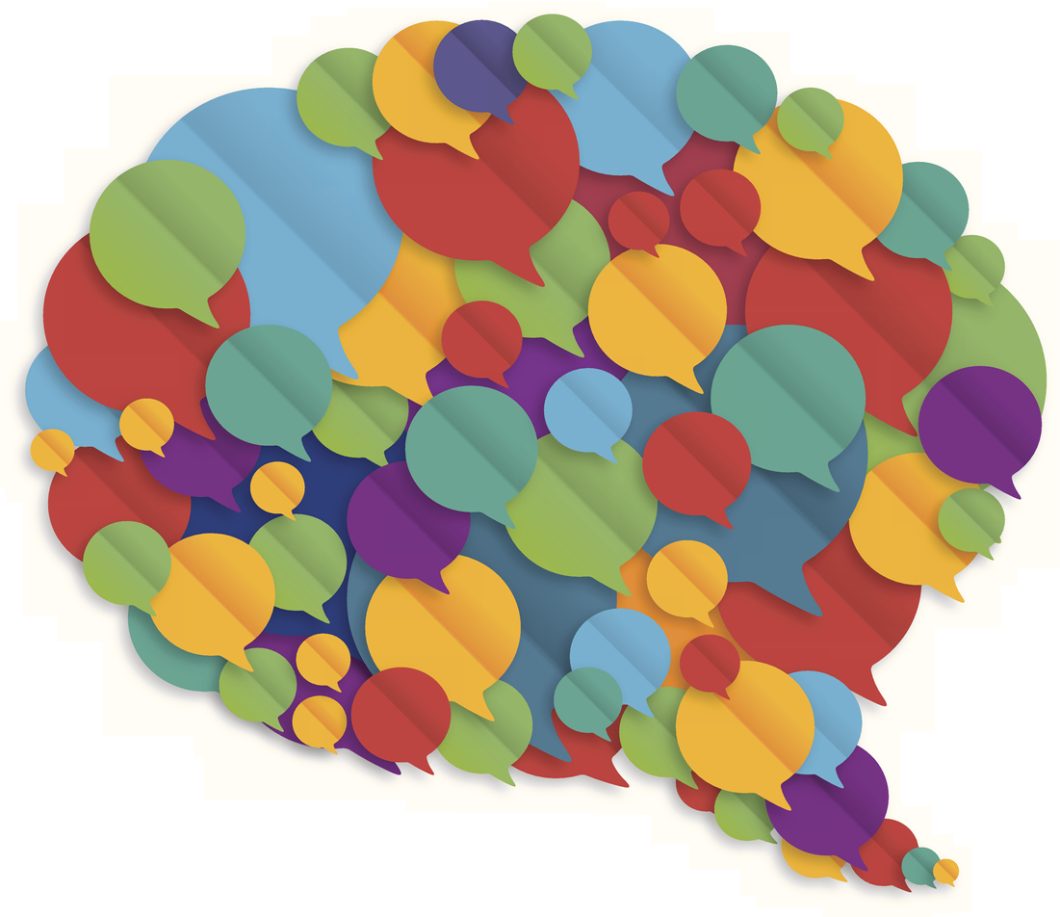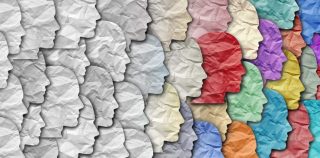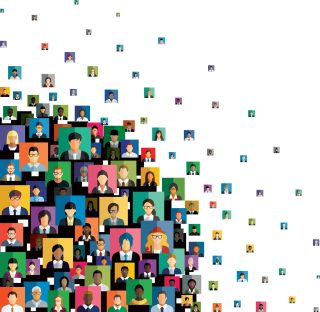Lack of diversity in science journalism limits which stories get told, how they are told, and whose voices are heard. It affects public perceptions of the scientific enterprise, suggesting that science is for some more than others. And it perpetuates stereotypes, societal injustice, and distrust of both science and journalism among historically marginalized communities, including Black, Indigenous, and Hispanic people; LGBTQ+ people; women; people with disabilities; recent immigrants; scientists in the Global South; and other underrepresented minorities. While many newsrooms are discussing how to attract and retain more journalists from underrepresented communities, including a wider range of perspectives from sources is also an important step towards equity. Including diverse voices in science stories ensures more accurate and complete stories that more fully reflect and inform readers, and is the equitable thing to do.
Writing for The Open Notebook in 2016, science journalist Christina Selby offered a four-step program for science writers who want to include more diverse sources in their stories. That program called for reporters to recognize biases that inhibit them from including diverse voices, to track the diversity of their sources, to break out of old reporting patterns to cultivate new sources, and to broaden their definition of who is an expert. For some reporters, finding diverse sources may seem daunting, especially on a tight deadline. But no matter how much or how little time you have, prioritizing diversity in sourcing should be a core part of any journalist’s working routine, as it already is for many science writers.
Here, we compile detailed and specific resources and strategies that reporters can use to make that goal a reality, drawing on the wealth of information available from many U.S.-based organizations and scientists. Strategies for finding diverse sources can include drawing on publicly available scientist databases, social media accounts and hashtags, affinity organizations in STEM, sources, colleagues, public information officers, expert-referral services, and online discussion groups. We also suggest ways for editors to support reporters’ efforts to include more diverse sources, including by creating a newsroom culture that welcomes collaborative discussion about diversity (in sourcing and other respects), by setting and tracking goals, and by encouraging and concretely supporting reporters’ sourcing efforts.
Make the Search for Diverse Sources a Habit of Mind
As with any effort to defeat systemic racism and other forms of prejudice and discrimination, a first and necessary step in cultivating more diverse sources is to make doing so a priority and a habit of mind—not just when there’s a crisis, but as a standard practice. That means setting aside time, even in the absence of a specific assignment, to learn about and become more familiar with a range of diverse experts in the fields you cover. You don’t have to do everything at once; small actions accumulate, and the more often we take steps to engage with a diverse group of potential sources, the more easily it becomes a habit.
Search Diversity Databases
Many, many groups and individuals have created lists and databases of scientific experts that journalists can consult in their search for relevant sources. We share some of them below. (We welcome suggestions for others, especially if they are not already included in the “databases of databases” we link to below. To suggest additions, email us.)
Databases of Diverse Scientists in All Fields
- 500 Queer Scientists aims to increase the visibility of LGBTQ+ people in science. Its database of scientists is searchable by discipline and location.
- The Society for the Advancement of Chicanos and Native Americans in Science’s Biography Project presents first-person stories by and about Chicano/Hispanic and Native American scientists.
- Disabled Writers aims to increase representation of disabled people in media, and publishes a database that includes both disabled subject-matter experts and disabled writers.
- The Women’s Media Center’s SheSource is an online database of women experts, searchable by keyword, area of expertise, language, and location.
- 500 Women Scientists is an organization dedicated to “the transformation of leadership, diversity, and public engagement in science.” Among other projects, the group publishes a database of women scientists, searchable by keyword, location, and discipline. Users can also “favorite” experts for future reference.
- People of Color Also Know Stuff includes a database of experts in various fields, including political science, psychology, and public health. The database includes information about experts’ affiliations, research interests, and contact information.
- Diverse Sources is a database of scientific experts from underrepresented communities. The database is searchable by keyword, and people who choose to be listed can include information such as their area of expertise, location and time zone, groups with which they self-identify, pronouns, and contact information. (Information about how experts self-identify is not included as a column in this database, but may be findable through search.)
- NPR’s Diverse Sources Database is a curated collection of experts in many fields who are members of underrepresented racial and ethnic communities. Users can browse the directory alphabetically or by location or area of expertise. (Note that information about how experts self-identify is not included in this database.)
- Editors of Color’s Database of Diverse Databases includes field-specific databases of diverse experts in numerous scientific fields, including virology, chemistry, systems neuroscience, ecology and evolutionary biology, life sciences, physics, cell biology, engineering biology, microbiome research, material science, biochemistry, and more.
- The Georgia Tech Diversity and Inclusion Project’s Database of Databases was established to help conference organizers identify diverse STEM experts as possible speakers. It includes both general and field-specific databases of experts in numerous scientific fields, including ecology and evolution, plant sciences, microbiology, neuroscience, physics, astronomy, chemistry, data science, and more.
Additional Field-Specific Databases
- The Global South Climate Database is a publicly available, searchable database of scientists and experts in the fields of climate science, policy and energy.
- Diversify Chemistry is a database of chemists who identify as members of underrepresented communities. The database includes information about people’s branch of chemistry, institution, country, career stage, self-identification (with categories of race, ethnicity, sexual orientation, and gender), and contact information.
- The LGBT+ Physicists Outlist is a directory of LGBTQ+ physicists and allies. The directory includes people’s job position, institutional affiliation, location, and contact information.
- The Color of Water Initiative, a directory of was created by the Water Hub to build voice and visibility for people of color in the water movement.
- The Reporting on Addiction Expert Database includes addiction treatment providers, researchers, people with lived experience and more who are available for interviews with reporters.
- The American Astronomical Society’s Astronomy and Astrophysics Outlist is a directory of LGBTQ+ members of the astronomical community. The directory includes people’s job position, institutional affiliation, location, and contact information.
- The Society of Women Engineers hosts the following affinity groups on Facebook: African-American, Latinx, LGBTQ and allies, Asian Connections, Native American. Membership in the affinity groups is private, but admins are public.
- The Women in Neuroscience Repository includes women graduate students, post-docs, and senior scientists in neuroscience. The database is searchable by keyword, and users can filter results to only include people from under-represented countries and/or to include only scientists in senior positions.
- Women+ (Sourcelist) is a database of women and underrepresented genders in technology and technology policy.
- The Women in Physics Speakers List, and the Minority Physicists Speakers List, both run by the American Physical Society, are searchable by keyword, location (state or country), and subfield.
Follow Diverse Scientists on Social Media
You’re more likely to find diverse sources for any given story if you expose yourself, regularly, to the ideas and perspectives of scientists whose voices are underrepresented in science journalism. One way to do that is by making sure your reading diet includes books, journalism, essays, and other contributions from people who are members of marginalized communities. It’s also helpful to follow a wide range of people on social media, to see what they’re writing, what they’re reading, who they’re following, and so on. Here’s a (non-exhaustive) list of Twitter accounts, lists, and hashtags that can help you find scientists relevant to the beats you cover:
Twitter Accounts
@500QueerSci | @500WomenSci | @AISES | @AAS_WGAD | @BlackandSTEM | @BlackAFinSTEM | @BlackWomenSTEM | @CientíficasMx | @CultureDish | @DisabledWriters | @DiverseSources | @GAIAIndigeneers | @HBCUSTEM | @InclusiveSci | @LatinasinSTEM | @LGBTscholars | @LGBTSTEM | @MinoritySTEM | @MinorityPostdoc | @NOBCChE | @NSTNSorg | @OUTinStem | @POCAlsoKnow | @PrideinSTEM | @RequestWSTEMM | @SACNAS | @SheSource | @VanguardSTEM | @WOCinSTEM | @WokeSTEMHashtags
#Academics4BlackLives | #ActuallyAutistic | #AmplifyBlackSTEM | #BlackandSTEM | #BlackAFinSTEM | #BlackinAcademia | #BlackinAstro | #BlackinNeuro | #BlackintheIvory | #DisabledandSTEM | #DisabledinSTEM | #LatinxandSTEM | #LatinxinSTEM | #LGBTQSTEM | #MarginSci | #NativesinSTEM | #QueerinSTEM | #STEMDiversity | #STEMteenth | #TransInSTEM | #WCWinSTEM | #WomenWhoCode | #WomeninScience | #WomeninSTEM | #WOCinSTEM
Twitter Lists
- BLACKandSTEM, by @ThePurplePage
- Diverse scientists mentioned in the Ologies podcast’s BlackAFinSTEM episode, by @Ologies
- Diversity in STEM, by @umichOGPS
- ErryonebutCISWhiteGuysSci, by @te_jenson
- Green voices of color, by @MaryHeglar
- Indigenous STEM, by @Napaaqtuk
- People who’ve contributed bios to 500 Queer Scientists, by @500QueerSci
- POC STEM professionals, by @DNLee5
Finding Diverse Sources Using Twitter Lists
One way to find additional diverse scientists, including those most relevant to specific beats, is to search for lists created by well-connected journalists and/or scientists who are active on Twitter; just click on the “More” (three dots) icon on a user’s Twitter profile, then click “View Lists.”
Find Affinity Organizations in STEM
Reporters can also seek sources through scientific affinity organizations. (Note: Some regard it as part of their mission to help connect journalists with diverse sources; others may not regard doing so as part of their responsibility.) Here’s a small sampling of the many that exist:
- Academics for Black Survival and Wellness
- American Indian Science and Engineering Society
- Association for Women in Mathematics
- Association for Women in Science
- Association of Black Anthropologists
- Association of Black Women Physicians
- Earth Science Women’s Network
- Institute for Tribal Environmental Professionals
- Latinas in STEM
- MAES (Latinos in Science and Engineering)
- National Association of Black Geoscientists
- National Organization for the Professional Advancement of Black Chemists and Chemical Engineers
- National Society of Black Engineers
- National Society of Black Physicists
- National Society of Hispanic Physicists
- Native American and Indigenous Studies Association
- National Latinx Psychological Association
- Society for Advancement of Chicanos/Hispanics and Native Americans in Science
- Society of Hispanic Professional Engineers
- Society of Women Engineers
Ask for Help
There’s no shame in asking other people to help you find suitable sources. (Remember that people from historically marginalized groups should not be expected to take on the responsibility of doing reporters’ research for them.) People who science journalists can turn to for source recommendations can include:
- Sources. Asking sources who else you should talk to is a standard interview technique. In doing so, it’s a good idea to specifically seek out diverse sources—for example, by saying something like: “My publication makes it a practice to consistently include diverse sources in our stories, so that we can accurately capture the range of experts whose voices, perspectives, and expertise are relevant. Toward that end, can you recommend some additional experts I might talk with whose work is pertinent here and who are people of color or who are members of other historically marginalized communities?” Such a question can be a useful strategy even when interacting with sources who are not able to make time for an interview. (Additionally, when reporting on science that involves researchers in nations in the Global South, it’s important to include those scientists as sources. If a U.S. institution has put out a press release about a study, it may not prominently include contact information for study co-authors outside the U.S., but U.S. sources should be able to help facilitate such connections.)
- Colleagues. Other journalists may be able to suggest suitable experts from diverse communities. Remember, though, that relying on other reporters to find sources can perpetuate the problem of the same few minority voices being heard again and again.
- Press officers. Public information officers at universities, scientific societies, funding agencies, and nonprofit organizations can help reporters find sources, and should be able to respond helpfully to requests for experts who are from underrepresented communities, when possible. As with any request to press officers, when making such requests it’s helpful to be specific about what type of expertise you’re seeking and on what timeline.
- University-specific affinity groups. Many universities have institution-specific affinity groups, which are easily searchable. For example, searching for “University of Illinois physics affinity groups” yields this page.
- Expert-referral services. Expert referral services can sometimes fulfill journalists’ requests for diverse sources.
- The National Science & Technology News Service (NSTNS) links journalists to Black scientists who have experience working with the media. Reporters can tweet queries to the group @NSTNSorg.
- SciLine, a free service supported by the American Association for the Advancement of Science, connects journalists with scientific experts. Sciline accepts requests for diverse sources and routinely seeks out sources from underrepresented groups.
- Requesting diverse sources through other referral services, such as Newswise, HARO, and ProfNet, may also turn up good options.
- Online discussion groups. If you belong to an online discussion group of journalists—whether it be a private Facebook or Slack group or a discussion group such as those hosted by the National Association of Science Writers or the Society of Environmental Journalists—you can ask other subscribers if they can recommend potential sources with particular expertise, and specify that you’re seeking diverse sources.
- Twitter. Asking for sourcing suggestions on Twitter can be helpful; again, be mindful not to expect that people from marginalized communities will do the work of finding your sources.
More Reading on Source Diversity and Source Tracking
- Chalkbeat: “How to Design Your Source Diversity Audit Survey with Inclusivity in Mind,” by Caroline Bauman
- Chalkbeat: “Here’s Everything We Learned about Source Diversity Auditing,” by Caroline Bauman
- Institute for Nonprofit News: Case Study: How Nonprofit Newsrooms Track Sources to Ensure Coverage Reflects Community
- America Amplified: Why Tracking Source Diversity Can Be a Step toward More Inclusive Journalism
- Columbia Journalism Review: “Sourcing Diversity: WHYY and the Rocky Road to ‘Cultural Competency,’” by Andrea Wenzel
- Freedom Forum Institute/Power Shift Project: Do You Qualify as an Ally?
- Gastropod podcast: “Tracking and Increasing the Representation of Diverse Voices: A Report and Findings”
- Global Media Monitoring Project: Who Makes the News?
- International Journalists’ Network: 7 Resources to Make Your Stories More Inclusive
- KUT (Austin, Texas NPR affiliate): “We Tracked The Diversity Of Voices In KUT’s Local News. Here’s What We Learned From A Year Of Data,” by Matt Largey
- National Association of Science Writers: “How Can We Solve the Diversity Dearth in U.S. Science Writing?” by Danya AbdelHameid
- Nieman Lab: “Want to know if your news organization reflects your community? Do a source audit. Here’s how.”
- NPR: New On-Air Source Diversity Data For NPR Show Much Work Ahead
- Reynolds Journalism Institute: Measuring Progress on Inclusivity
- Reynolds Journalism Institute: We’re Building a Better System for Tracking Source Diversity
- Seattle Times Guidelines for Inclusive Journalism
- Shorenstein Center on Media, Politics and Public Policy: “In the Shadow of Kerner: Fifty Years Later, Newsroom Diversity and Equity Stall”
- Society of Professional Journalists: Diversity Toolbox
- Motherboard: “What Happened When I Pushed Myself to Interview More Women,” by John Platt
- The Atlantic: “I Analyzed a Year of My Reporting for Gender Bias (Again),” by Adrienne LaFrance
- The Atlantic: “I Spent Two Years Trying to Fix the Gender Imbalance in My Stories,” by Ed Yong
- The Authority Collective: Photographer’s Guide to Inclusive Photography
- Undark: “More Inclusive Science Journalism Is Better Science Journalism,” by Erika Check Hayden
- Wisconsin Public Radio’s Source Demographic Project
Related Readings at The Open Notebook

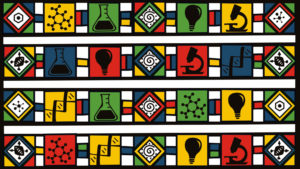
Decolonizing Science Writing in South Africa

Writing When on the Autism Spectrum
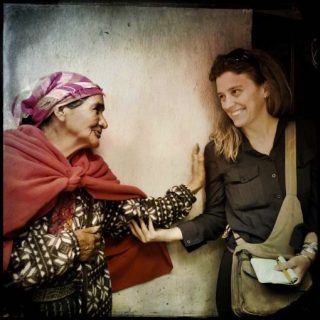


Reporting Unsung Histories of Science
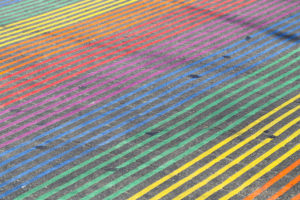
Including LGBTQ+ Scientists as Sources
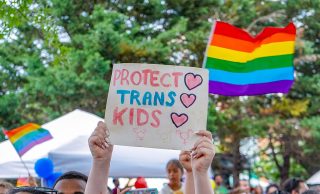
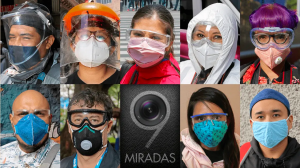

Reporting on Assistive Technology

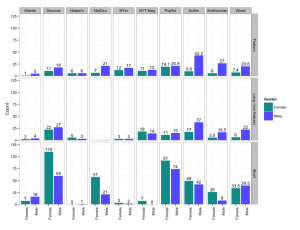
The Science Byline Counting Project: Where Are the Women—and Where Are They Not?
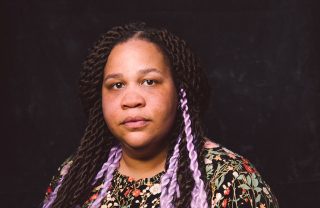

Reporting on Health Disparities

Fredrick Mugira “Defamiliarizes” Stories of the Nile
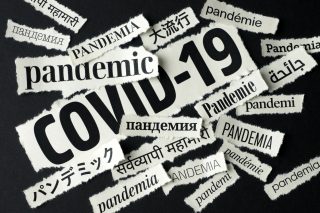
How Non-Western Journalists Enriched Coverage of the Global Pandemic

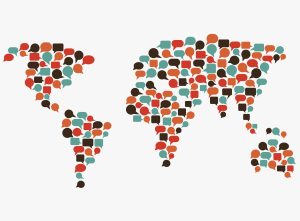
Translators’ Roundtable: Bringing Science to New Audiences

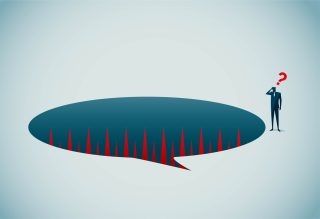

Including Diverse Voices in Science Stories
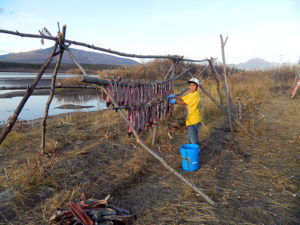
Covering Indigenous Communities with Respect and Sensitivity
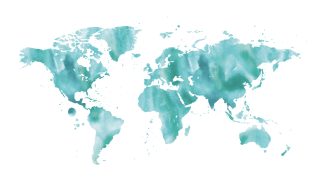
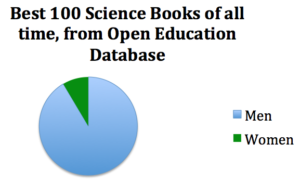
The XX Question

Making Your Writing and Reporting Transgender-Inclusive
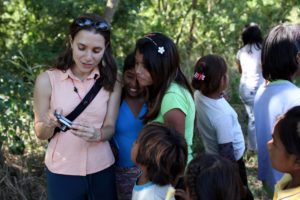
The Do’s and Don’ts of Community Engagement
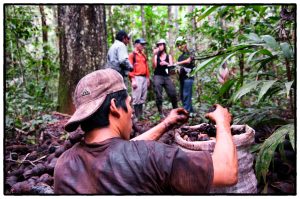
Who Is an Expert? Broadening the Definition Strengthens Journalism
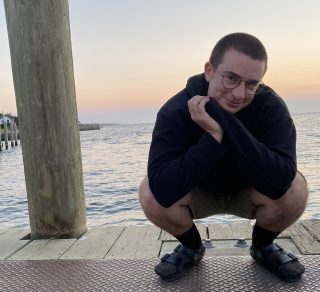
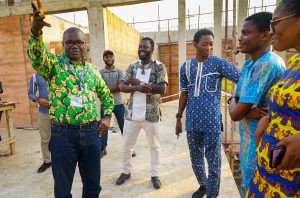
Unique Models Fuse Science with Journalism in Nigeria

Hold the Line: Reporting without Phone or Internet Access
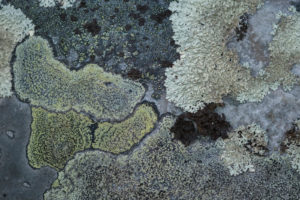
Introducing the Diverse Voices Series

Feeling Like a Fraud: The Impostor Phenomenon in Science Writing
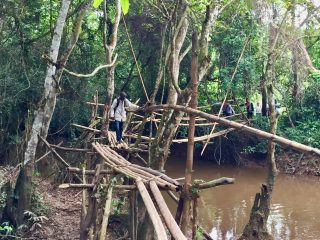
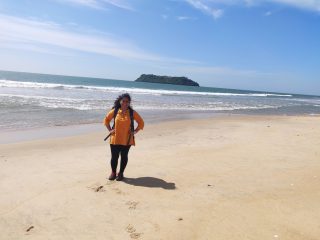
Discovering a Climate-Science Beat in India

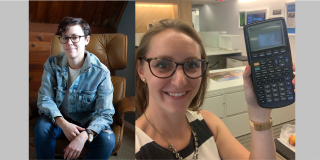
Journalism Affinity Associations
- Asian American Journalists Association (@AAJA)
- National Association of Black Journalists (@NABJ)
- National Association of Hispanic Journalists (@NAHJ)
- National Center on Disability and Journalism (@NCDJ_ASU)
- Native American Journalists Association (@najournalists)
- NLGJA: The Association of LGBTQ Journalists (@nlgja)
- South Asian Journalists Association (@sajahq)
- Trans Journalists Association (@TransJA)
- Women’s Media Center (@womensmediacntr)
(Editors’ Note: Thanks to Torie Bosch, Laura Helmuth, Jane C. Hu, Robin Lloyd, Rodrigo Pérez Ortega, Kendall Powell, Kelly Tyrrell, Alexandra Witze, and Lauren Wolf for contributing feedback and ideas for this resource page. Any errors or omissions remain the responsibility of The Open Notebook.)
Last updated November 5, 2022

